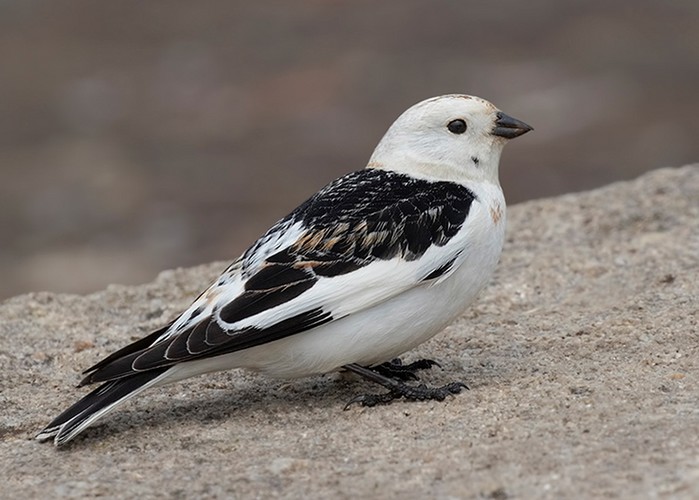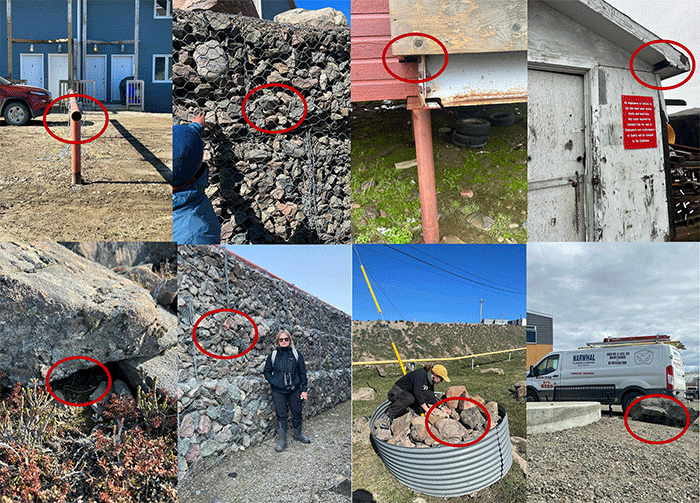Urban Nesting in the Arctic: Snow Buntings Embrace Human-Made Homes
In Iqaluit, Snow Buntings are adapting to urban life by nesting in buildings, metal pipes, and rock gabions

On the rocky tundra of Iqaluit, the capital of Nunavut, Snow Buntings are making homes in an unexpected place - not just in natural rock crevices, but also in vents, gabions, woodpiles and even metal pipes embedded in the urban fabric. A new study documents this unusual blend of wilderness and urbanity, showing that nearly half of the buntings observed were using anthropogenic nest cavities.
This is the first known study to quantify the extent to which an Arctic-breeding songbird is using human-made nest sites in a northern city. Conducted over two summers in Iqaluit, the research found that 45% of 160 recorded nests were in cavities associated with human structures - from the cracks in buildings to rock walls constructed around infrastructure.
Natural instincts, artificial homesIn the wild, Snow Buntings (Plectrophenax nivalis) typically nest in rock fissures, cliff faces or beneath boulders. Their urban counterparts, however, seem comfortable in a variety of materials: while most anthropogenic nests were still in rock (77%), others were located in wood, metal, or mixed-material buildings. Some were even tucked into gaps under plywood or between the mesh of wire gabions.
Interestingly, these human-influenced nests were usually higher off the ground than natural ones - a potentially beneficial trait in a region where increased rainfall and thaw cycles can flood ground-level nests. On average, artificial nests were about 2.1 metres above the ground, compared to 1.7 metres for natural cavities.
Does higher mean better?The benefits of elevation may include protection from predators such as ermine, dogs and rodents, as well as better drainage during summer storms. However, height alone doesn’t guarantee better nesting success. While cavity depth and orientation showed no significant difference between natural and artificial nests, the thermal properties and microclimates of these novel nest sites remain unknown.

Artificial cavities, particularly in metal or mixed substrates, might expose birds to unstable temperatures. Snow Buntings are well adapted to cold, and temperatures above 11.7°C can induce stress during the breeding season. Warmer nest interiors in metal pipes or buildings could prove risky in a warming Arctic.
Implications for urban ecologyUrbanisation is increasing across the Arctic, and Iqaluit has grown rapidly since becoming Nunavut’s capital. As buildings and infrastructure expand, the availability of human-made cavities might ease nest-site limitations for buntings - but this shift comes with trade-offs. Increased exposure to disturbance, heat, or new predators could offset the apparent advantages.
Globally, the effects of artificial cavities on nesting success vary. In other species like Pied and Collared Flycatchers, use of nest boxes has sometimes led to higher predation rates. While Snow Buntings in Alaska and Svalbard already use nest boxes, the long-term consequences of their urban adaptation in Iqaluit remain unclear.
Conservation in a changing NorthThese findings underscore the value of studying synanthropic species - wildlife that thrives in close proximity to humans. Snow Buntings are already adapting, but as climate change reshapes the Arctic landscape and urbanisation intensifies, researchers stress the importance of monitoring reproductive success and survival in both natural and anthropogenic nest sites.
As Arctic cities continue to grow, the story of the Snow Buntings of Iqaluit offers a glimpse into the complex future of bird life at the edge of the world. What seems like resilience may mask subtle new vulnerabilities - and the fate of these hardy birds may ultimately depend on how we design and manage the habitats we create.
June 2025
Share this story







